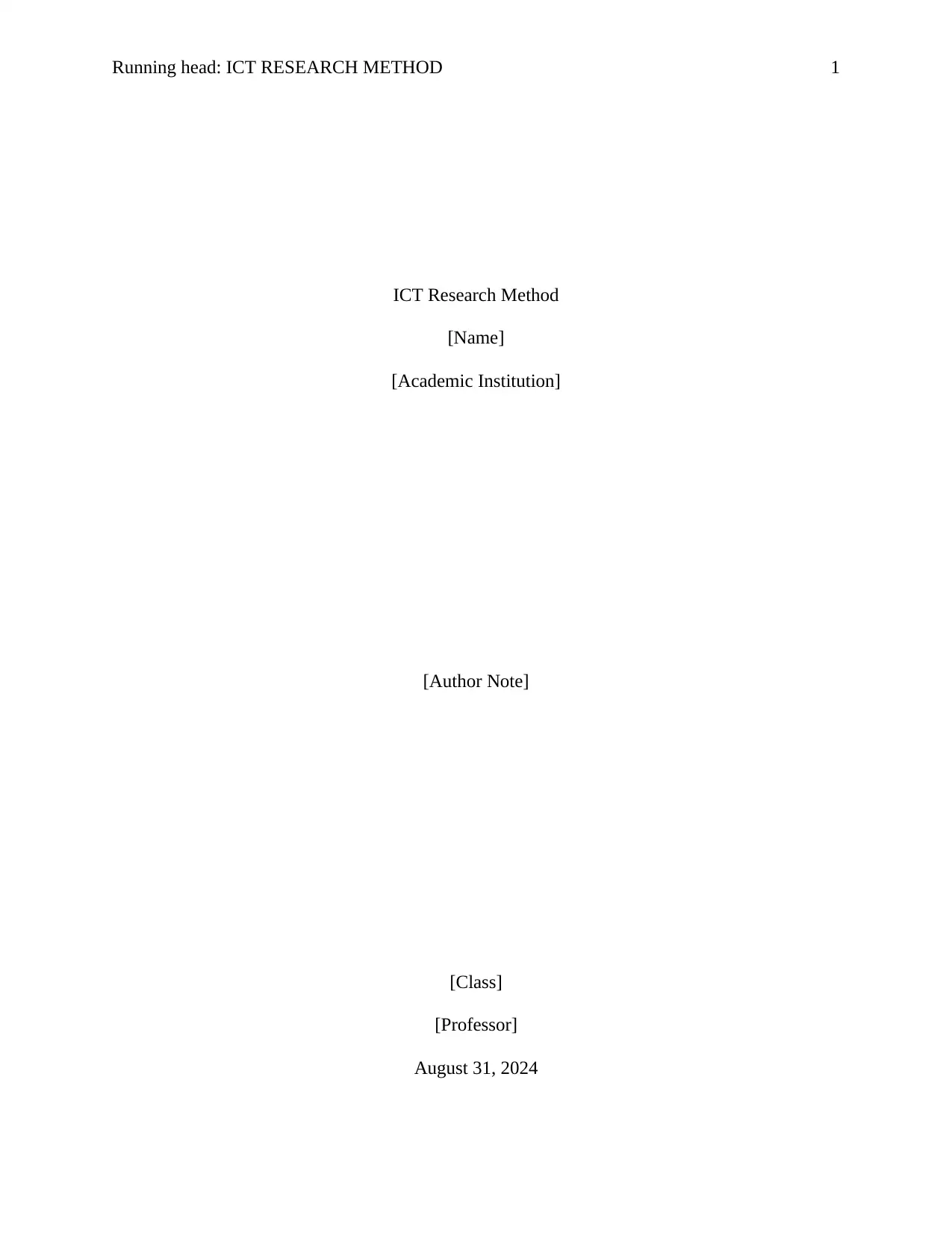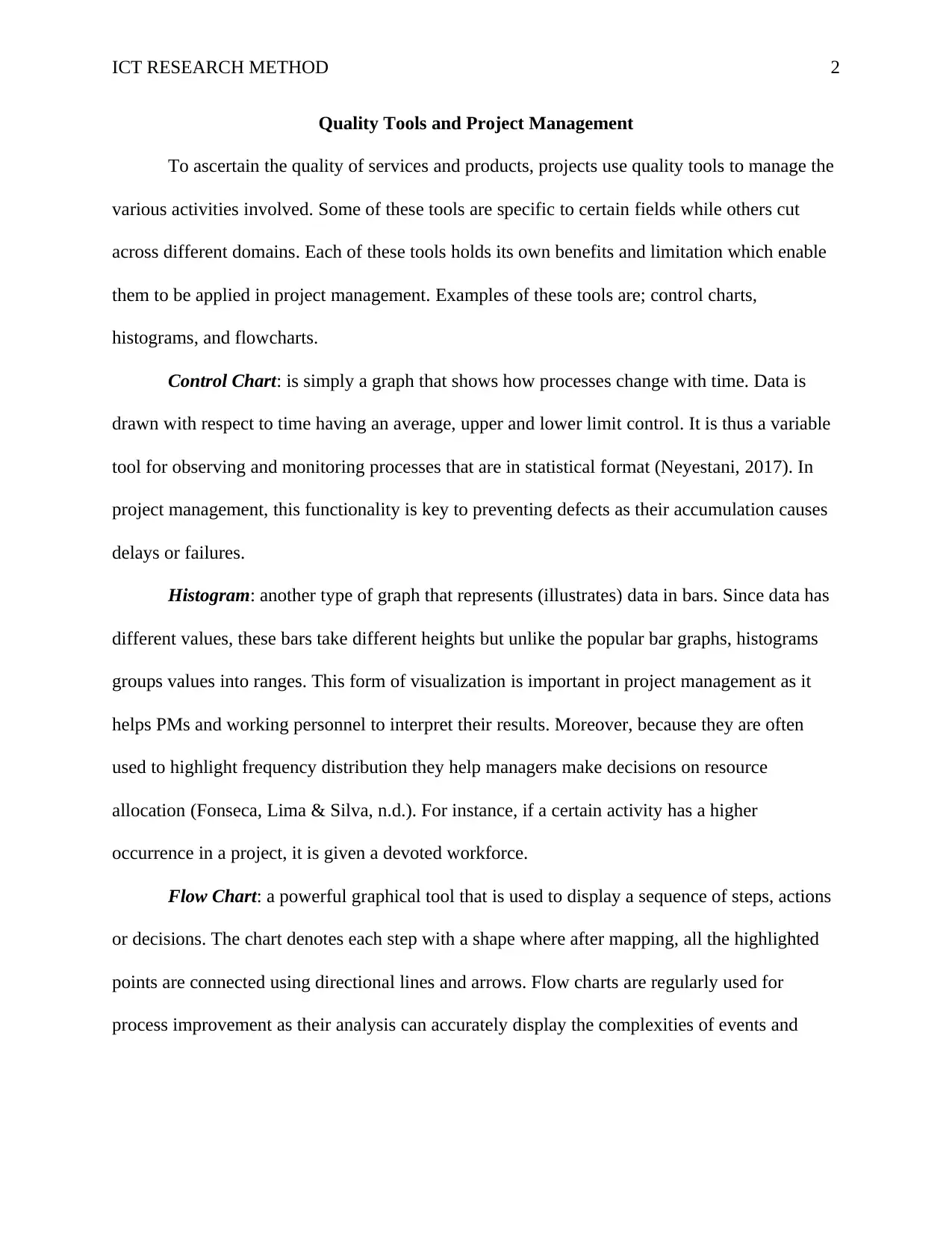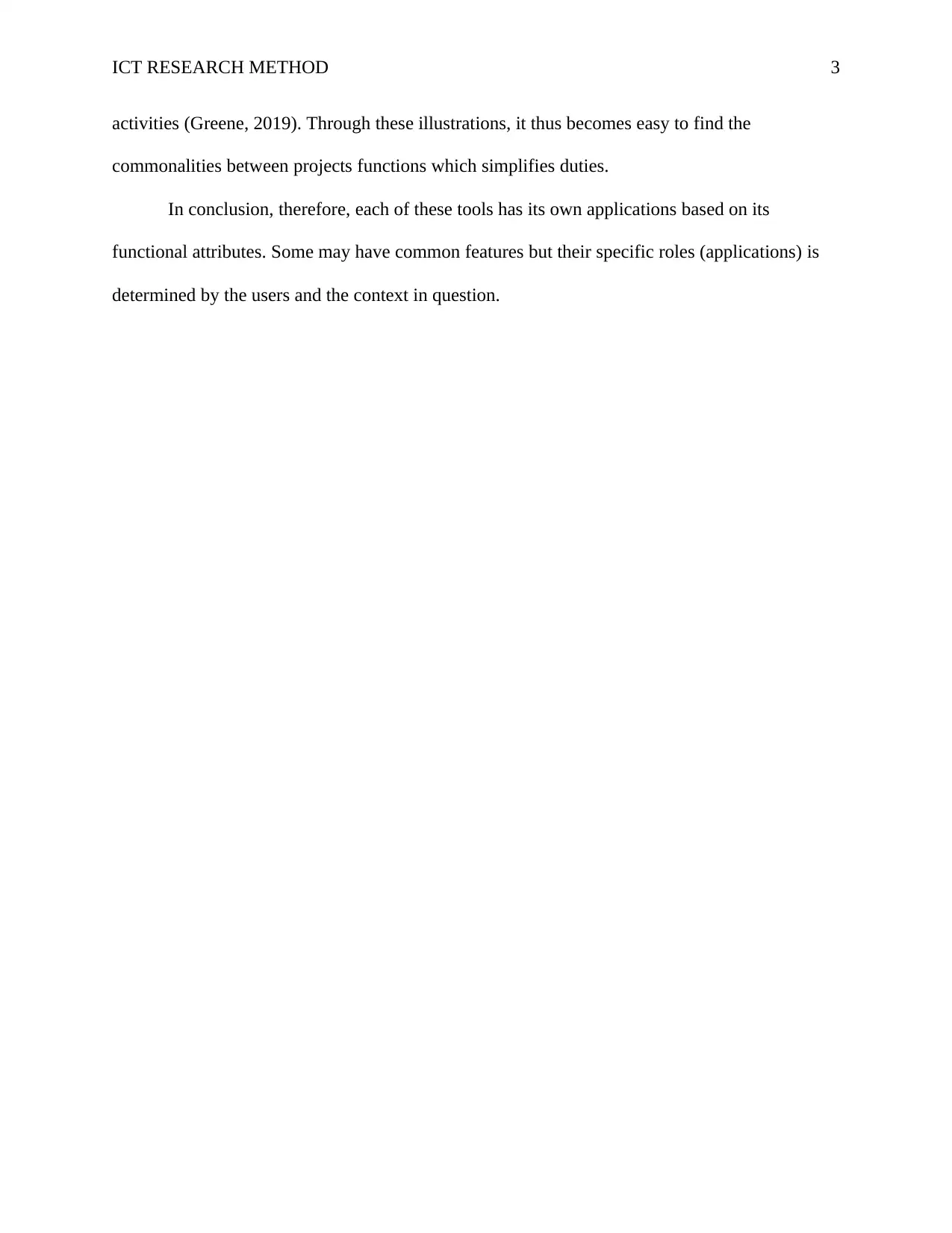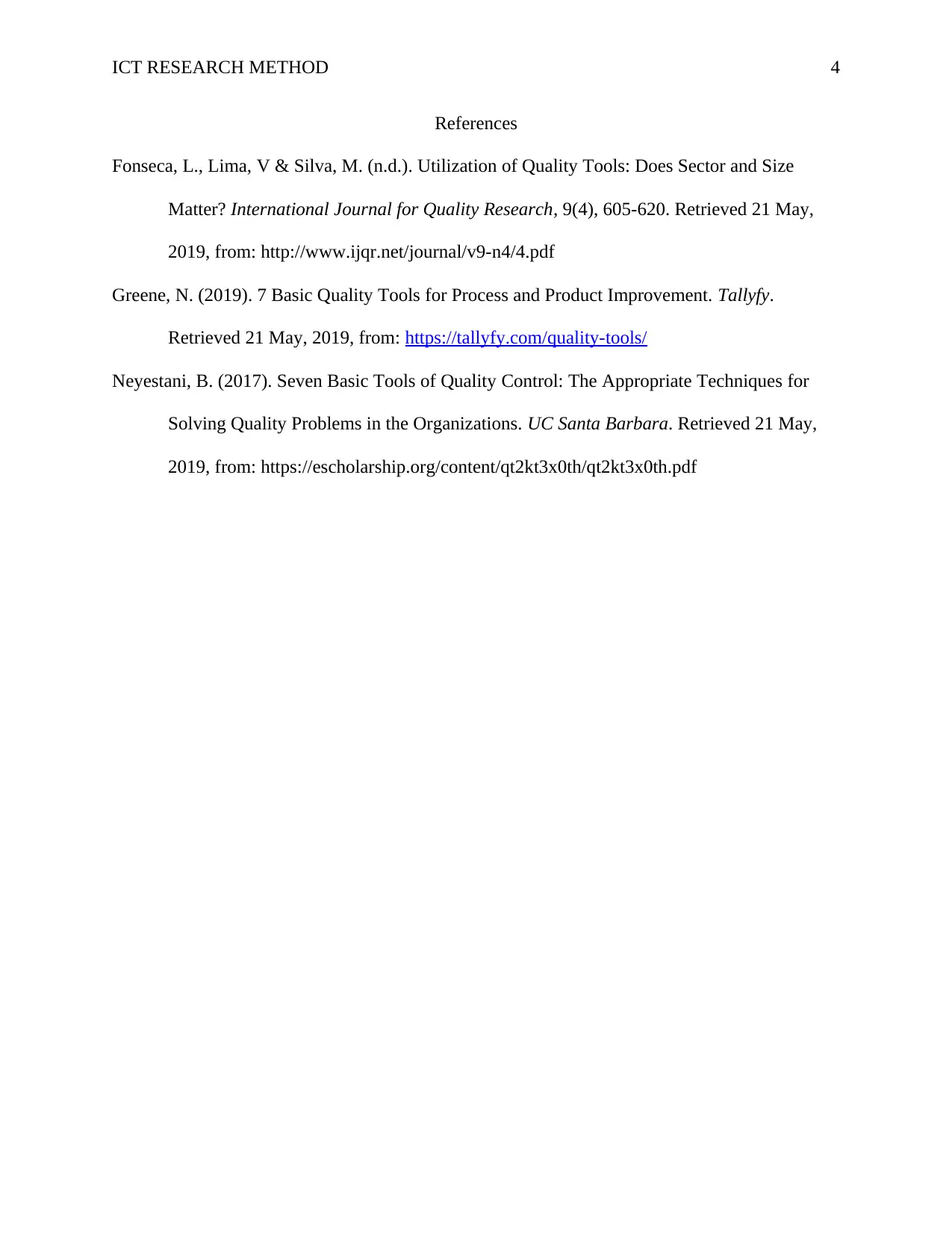ICT Research Method: Quality Tools in Project Management Report
VerifiedAdded on 2022/11/13
|4
|548
|348
Report
AI Summary
This report delves into the application of quality tools in project management, focusing on control charts, histograms, and flowcharts. The report starts by defining the roles of these tools in project management, highlighting how they aid in process improvement and data visualization. Control charts are described as tools for monitoring processes over time, histograms are presented as tools for displaying data distributions and aiding in resource allocation, and flowcharts are shown as tools for mapping and simplifying complex processes. The report references academic sources, emphasizing the importance of quality tools in achieving project goals and ensuring efficiency. The significance of these tools in different project scenarios and their potential for improving project outcomes is highlighted. The report also acknowledges that the choice and application of these tools depend on the specific needs of a project.
1 out of 4







![[object Object]](/_next/static/media/star-bottom.7253800d.svg)